Nephthys – Egyptian Funerary Goddess Who Also Protected The Pharaohs While They Were Alive
A. Sutherland - AncientPages.com - Egyptian goddess Nephthys - primarily associated with the myths of Heliopolis - was a funerary goddess and played a lesser role to her sister Isis. Otherwise, nothing is known about her before her appearance in these myths.
Nephthys goddess on the sarcophagus of Ramses III. Credit: Tangopaso - Public Domain
Her Egyptian name is "nebet-hut," which means "mistress of the mansion " However, any specific clue link to her true origin was never given. She was the daughter of Geb that symbolizes the beginning of everything in Egyptian mythology. Geb represented the beginning, fertility, and the earth. On the other hand, Nut was the mother goddess of all gods. Isis and Osiris were twin brothers of Nephthys, who eventually married another of his brothers, Seth.
It is confirmed that Nephtys' reign as an important goddess lasted all the way through the last Egyptian dynasty. It is also important to remember that she was one of the most ancient deities in Egyptian mythology.
In the Osiris myth, Nephtys (Nephthys) was one of the four deities involved in the Osiris myth, where she symbolically represented a partner to the god Seth. At the same time, the goddess Isis was the wife of Osiris. Based on one story, Nephthys had a sexual relation with Osiris, resulting in the birth of Anubis.
However, when Osiris is murdered, Nephthys - morning his death - helps her sister search for him, which is attested in the Pyramid Texts, where the goddess is "the one who floats in a night barge, while her sister Isis, in a day barge").
At first, she participated in the search for his body. Once the body of the murdered Osiris was recovered, both goddesses carried out a rite that allowed Osiris to be brought back to life.
It is believed that the tradition of embalming or mummifying the dead arose as a way to avoid the deterioration of the body of the deceased. Both sisters participated in the embalming of Osiris's body and helped him transit to the afterlife. Nephthys protected his mummy, standing at the head of his bed.
Nephthys was the companion of the god Ra during his night voyage through the underground realms.
As a funerary goddess, Nephthys was one of the most important deities protecting the dead. She was also one of the four divine guardians of the canopic jars and other items in royal and private burials. Due to her role, Isis, Selket, and Nephthys are closely associated with falcons, and their depictions were often shown on coffins in the form of winged women as protectors of the dead.
The two sisters were opposite to each other, like the mysterious death and night. Still, they acted together, and Nephthys was Isis' complement, symbolizing inferiority, infertile lands, and passivity.
Statue of Nephthys goddess at the Louvre Museum. Credit: Public Domain
In her relationship with the god Seth, Nephthys never had a child, and according to the Pyramid Texts, she was known as "the woman who has no vagina." Both Seth and Nephthys symbolized the world's chaos and destruction, while her sister in relationship with Osiris represented order and harmony.
She was depicted as a woman with a hieroglyph of her name on her head, often with two horns. Between them, a disc was placed that referred to this goddess as part of the solar cult. In the engravings of the time, it was located at the head of the deceased.
She had a connection with the Lower World but was also often entitled "The Goddess of Creation who lives in everything." Despite Nephthys' important role in ancient Egyptians' funerary beliefs, however, Nephthys had no temples or any representative cult center of her own.
According to myths and legends, Nephthys was a beautiful deity who protected the deceased and the pharaohs while they were alive and later when they died.
Written by – A. Sutherland - AncientPages.com Senior Staff Writer
Copyright © AncientPages.com All rights reserved. This material may not be published, broadcast, rewritten or redistributed in whole or part without the express written permission of AncientPages.com
More From Ancient Pages
-
 Gona, Ethiopia Discovery: Smallest ‘Homo Erectus’ Cranium In Africa And Stone Tools – Unearthed
Archaeology | Mar 5, 2020
Gona, Ethiopia Discovery: Smallest ‘Homo Erectus’ Cranium In Africa And Stone Tools – Unearthed
Archaeology | Mar 5, 2020 -
 What Is The Codex Sinaiticus And What Does It Mean?
Ancient History Facts | Feb 5, 2019
What Is The Codex Sinaiticus And What Does It Mean?
Ancient History Facts | Feb 5, 2019 -
 Scientists Explore How Neanderthals Caught Birds In Caves For Food
Archaeology | Sep 16, 2021
Scientists Explore How Neanderthals Caught Birds In Caves For Food
Archaeology | Sep 16, 2021 -
 More Than 300 ‘Sun Stones’ Dated To Stone Age Discovered On Danish Island Of Bornholm
Archaeology | Dec 20, 2017
More Than 300 ‘Sun Stones’ Dated To Stone Age Discovered On Danish Island Of Bornholm
Archaeology | Dec 20, 2017 -
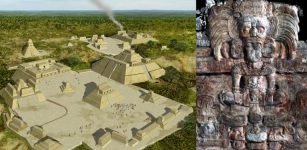 Mysterious Maya Snake Kings And Their Powerful Kingdom In The Jungle Reveal More Ancient Secrets
Civilizations | Apr 23, 2018
Mysterious Maya Snake Kings And Their Powerful Kingdom In The Jungle Reveal More Ancient Secrets
Civilizations | Apr 23, 2018 -
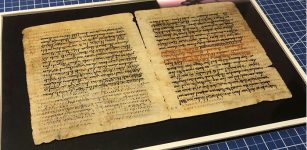 Lost Ancient Texts Of The Star Catalogue Composed By The Greek Astronomer Hipparchus Found
News | Feb 21, 2023
Lost Ancient Texts Of The Star Catalogue Composed By The Greek Astronomer Hipparchus Found
News | Feb 21, 2023 -
 Facial Reconstruction Of A 75,000-Year-Old Neanderthal Woman From Shanidar Cave
Archaeology | May 3, 2024
Facial Reconstruction Of A 75,000-Year-Old Neanderthal Woman From Shanidar Cave
Archaeology | May 3, 2024 -
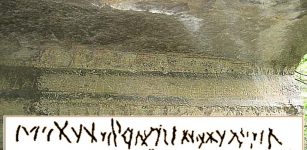 Mystery Of The Ancient Sitovo Inscription: Undeciphered Script Or Just A Natural Rock Formation?
Featured Stories | Apr 17, 2016
Mystery Of The Ancient Sitovo Inscription: Undeciphered Script Or Just A Natural Rock Formation?
Featured Stories | Apr 17, 2016 -
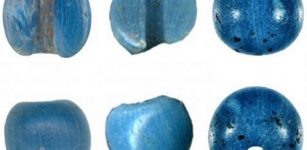 How Did These Beautiful Venetian Glass Beads Reach North America Long Before Columbus?
Archaeology | Feb 15, 2021
How Did These Beautiful Venetian Glass Beads Reach North America Long Before Columbus?
Archaeology | Feb 15, 2021 -
 Sacred Hidden Buyan Island And The Mysterious Alatyr Stone With Healing Powers May Have Existed
Featured Stories | Mar 22, 2018
Sacred Hidden Buyan Island And The Mysterious Alatyr Stone With Healing Powers May Have Existed
Featured Stories | Mar 22, 2018 -
 Raijin: Shinto God Of Thunder And Lightning With Three Fingers Representing Past, Present And Future
Featured Stories | Feb 10, 2020
Raijin: Shinto God Of Thunder And Lightning With Three Fingers Representing Past, Present And Future
Featured Stories | Feb 10, 2020 -
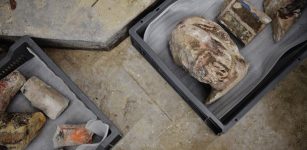 Surprising Discovery Of Ancient Sarcophagus At Paris’ Notre Dame Cathedral
Archaeology | Mar 16, 2022
Surprising Discovery Of Ancient Sarcophagus At Paris’ Notre Dame Cathedral
Archaeology | Mar 16, 2022 -
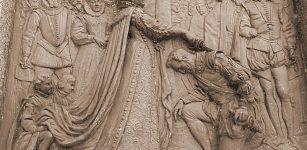 On This Day In History: Francis Drake Was Knighted After He Completed A Circumnavigation Of The World – On Apr 4, 1581
News | Apr 4, 2016
On This Day In History: Francis Drake Was Knighted After He Completed A Circumnavigation Of The World – On Apr 4, 1581
News | Apr 4, 2016 -
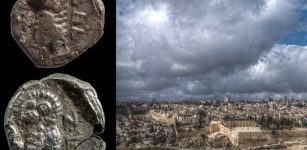 Extremely Rare And Tiny Biblical Coins Discovered Near The Temple Mount
Archaeology | May 30, 2018
Extremely Rare And Tiny Biblical Coins Discovered Near The Temple Mount
Archaeology | May 30, 2018 -
 Archaeological Enigma On The Træna Islands – What Happened To The Local Community?
Archaeology | Nov 28, 2023
Archaeological Enigma On The Træna Islands – What Happened To The Local Community?
Archaeology | Nov 28, 2023 -
 DNA Reveals How The Vikings Changed Scandinavian Migration And Ancestry
Archaeology | Jan 5, 2023
DNA Reveals How The Vikings Changed Scandinavian Migration And Ancestry
Archaeology | Jan 5, 2023 -
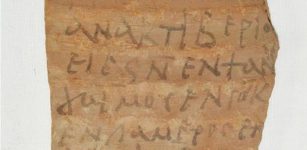 Rare Discovery Of More Than 18,000 Inscribed Pot Sherds Document Life In Ancient Egypt
Archaeology | Jan 31, 2022
Rare Discovery Of More Than 18,000 Inscribed Pot Sherds Document Life In Ancient Egypt
Archaeology | Jan 31, 2022 -
 Two Men Sentenced To Prison For Vandalism Of 4,000-Year-Old Petroglyphs In Nevada
Archaeology | Nov 12, 2022
Two Men Sentenced To Prison For Vandalism Of 4,000-Year-Old Petroglyphs In Nevada
Archaeology | Nov 12, 2022 -
 World’s Largest DNA Study Of Viking Skeletons Re-Writes Ancient History – Norse Warriors Were Not Those Who We Thought
Archaeology | Sep 16, 2020
World’s Largest DNA Study Of Viking Skeletons Re-Writes Ancient History – Norse Warriors Were Not Those Who We Thought
Archaeology | Sep 16, 2020 -
 Mystery Of The Lost Golden Chain Of Huayna Capac: Will The Ancient Inca Treasure Ever Be Found?
Artifacts | Dec 30, 2020
Mystery Of The Lost Golden Chain Of Huayna Capac: Will The Ancient Inca Treasure Ever Be Found?
Artifacts | Dec 30, 2020


